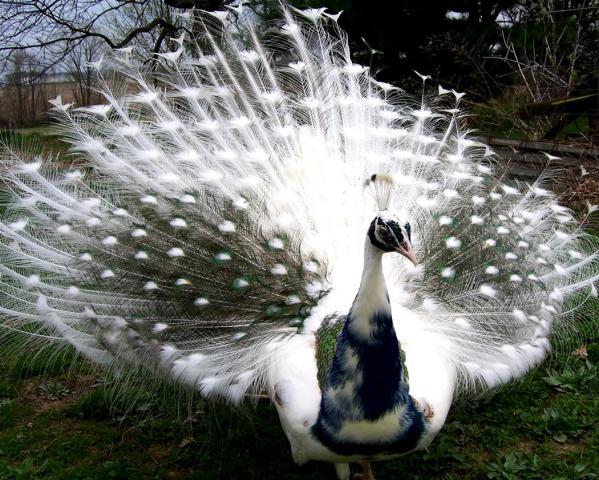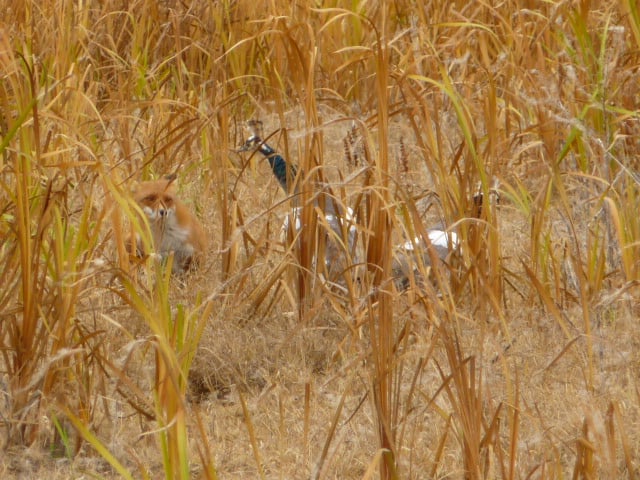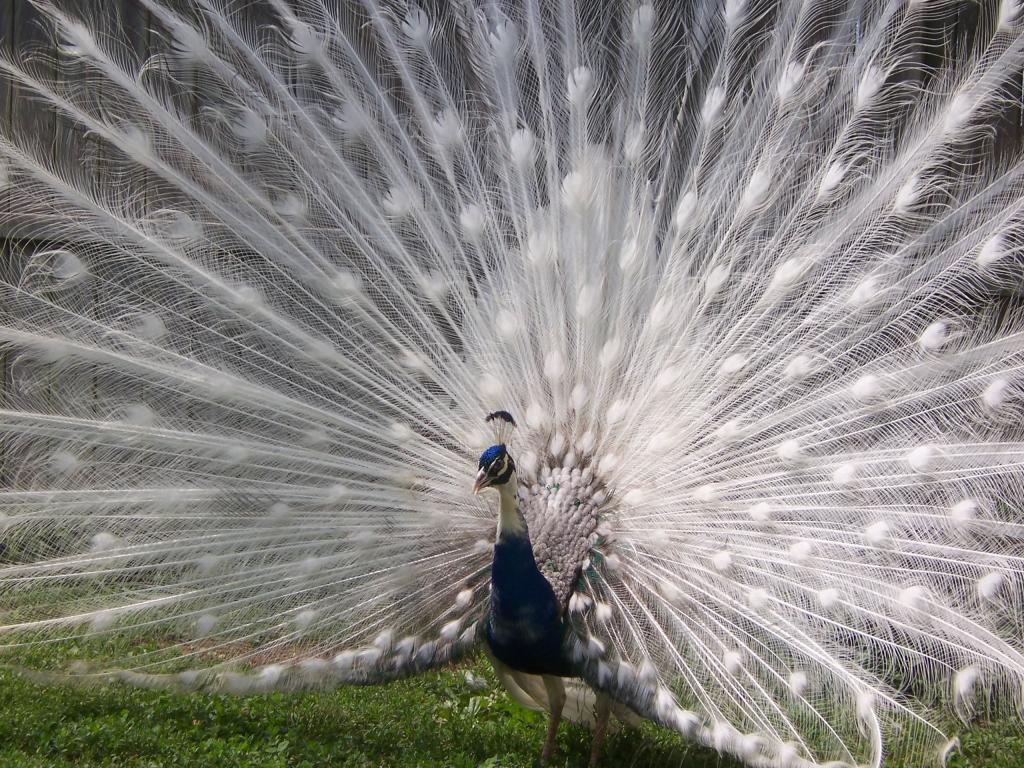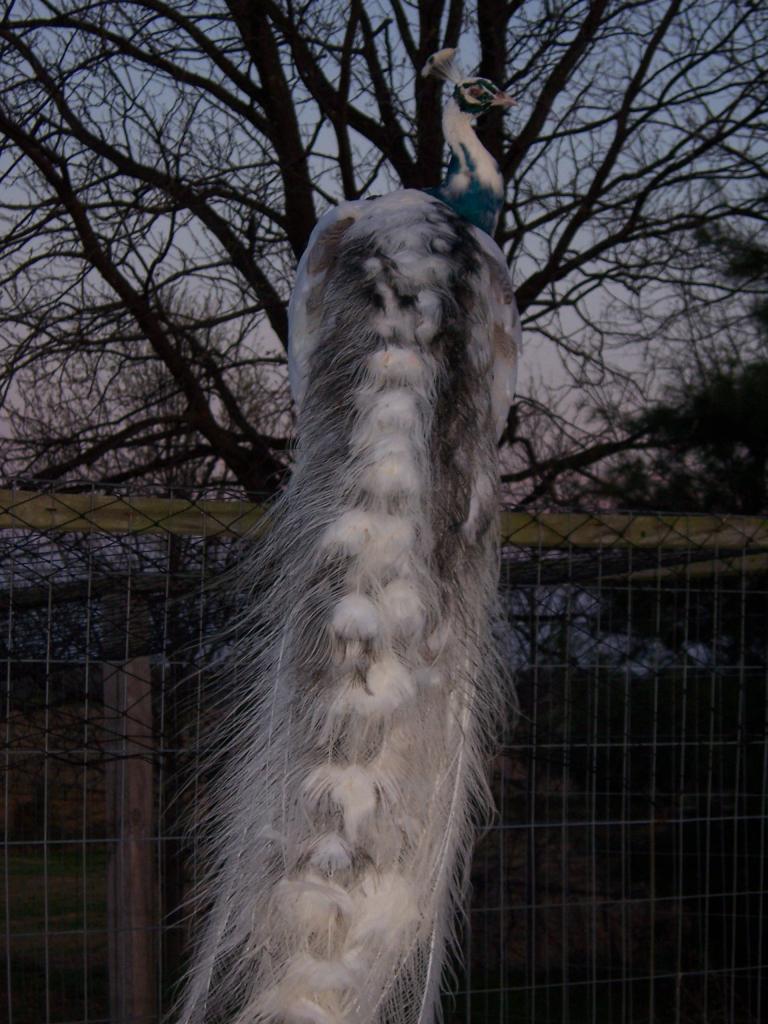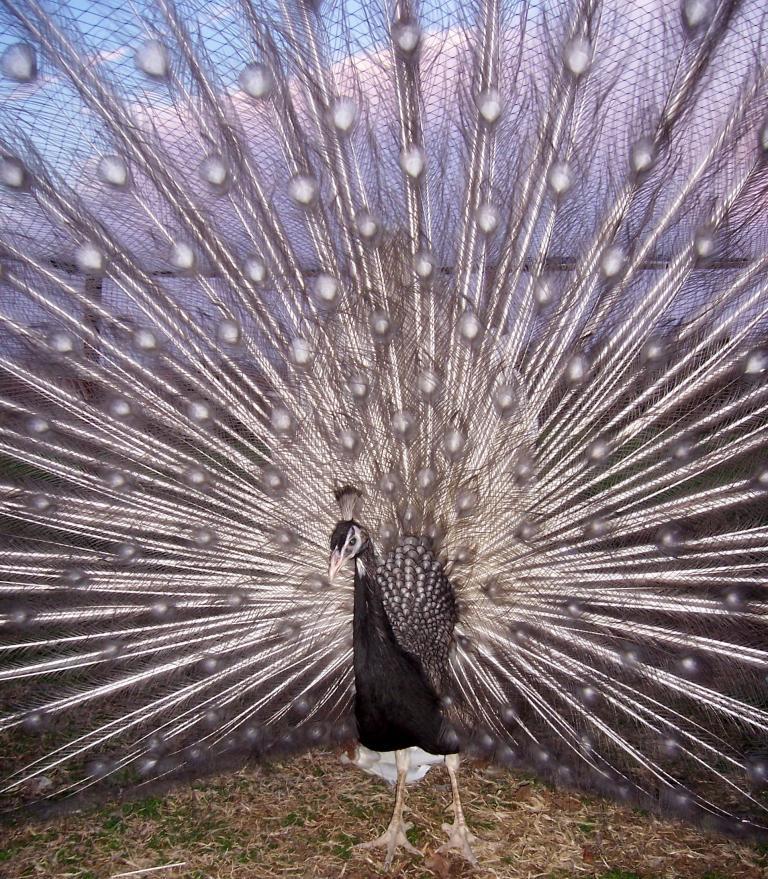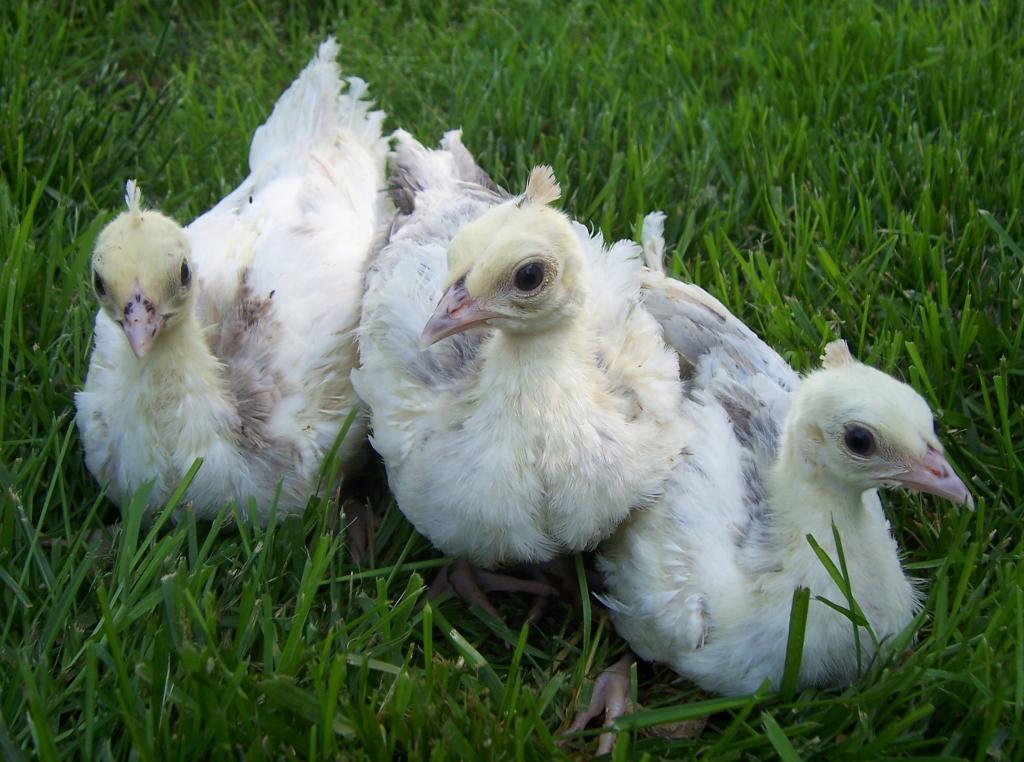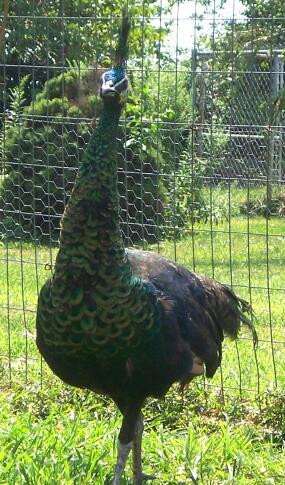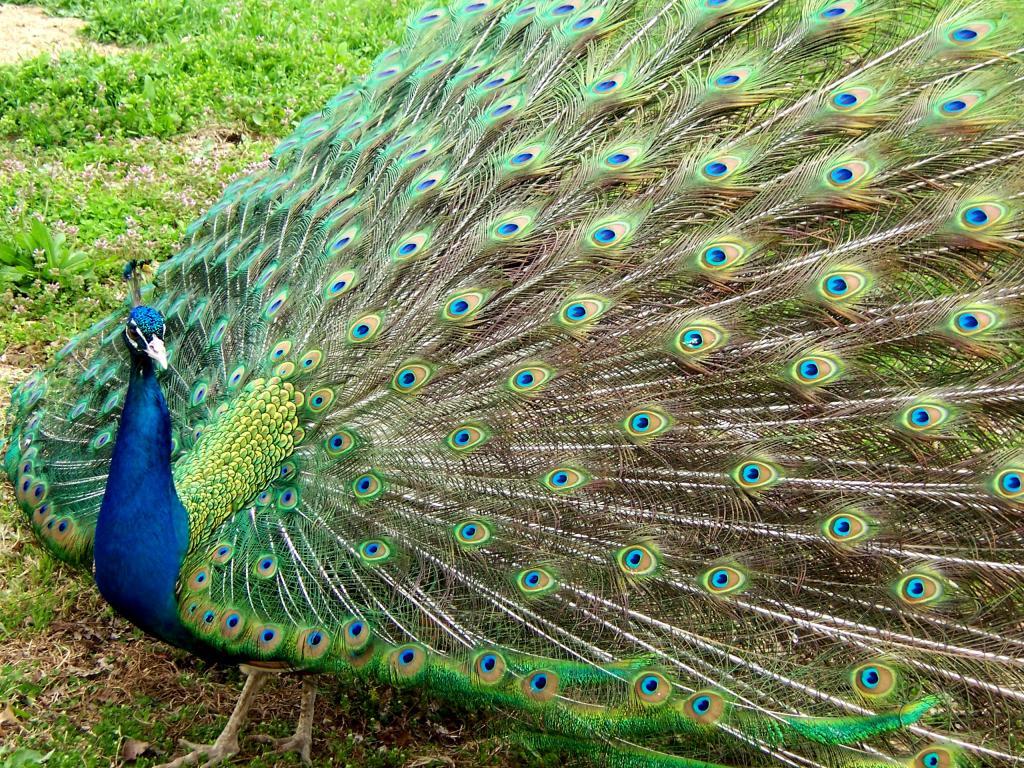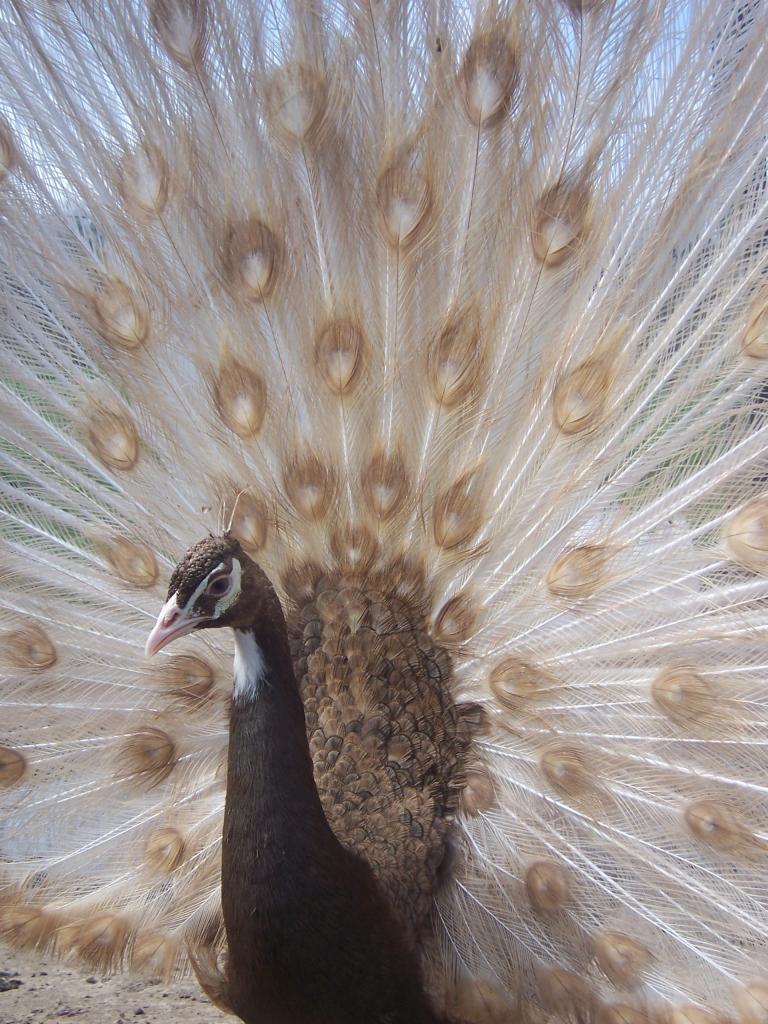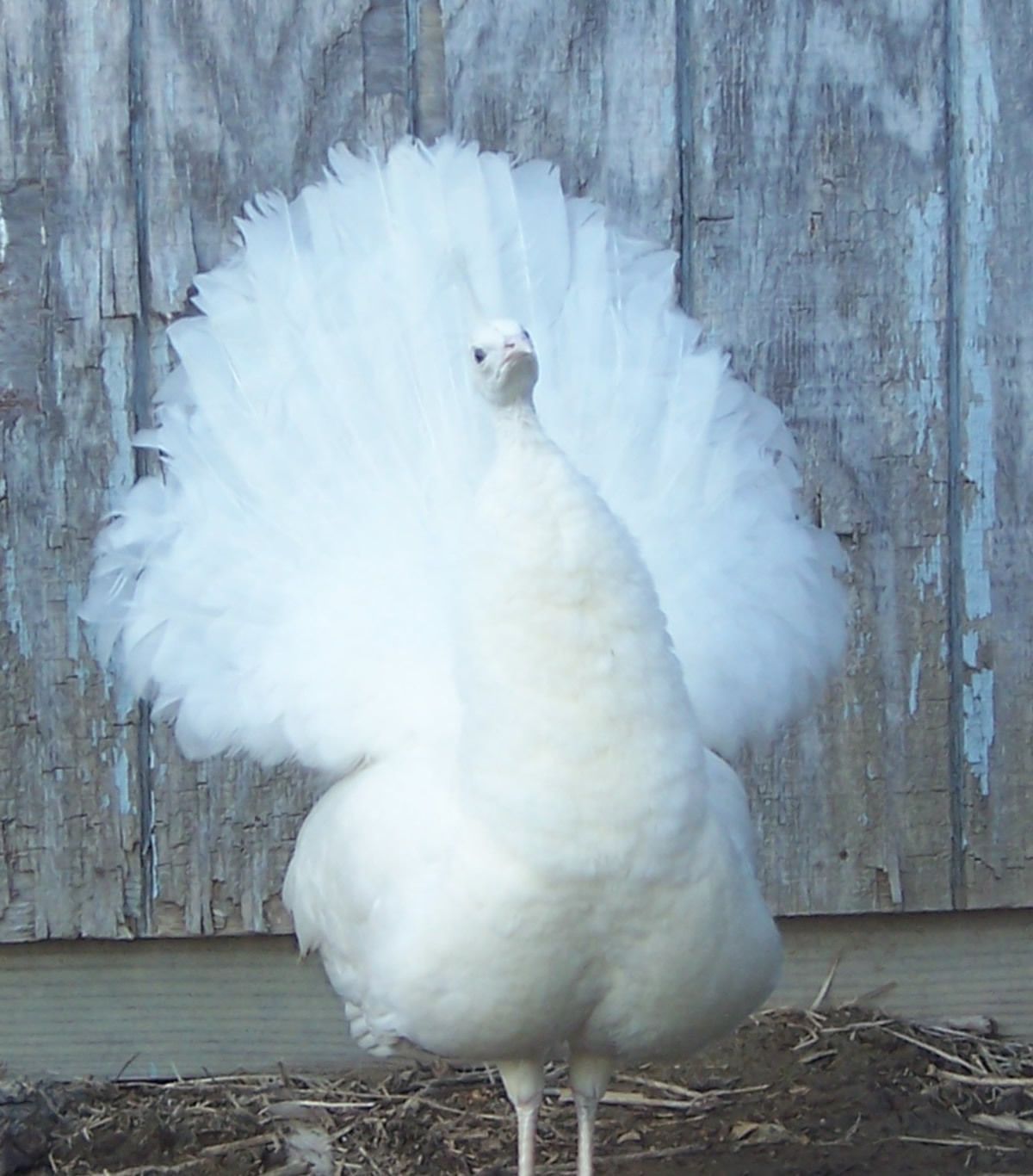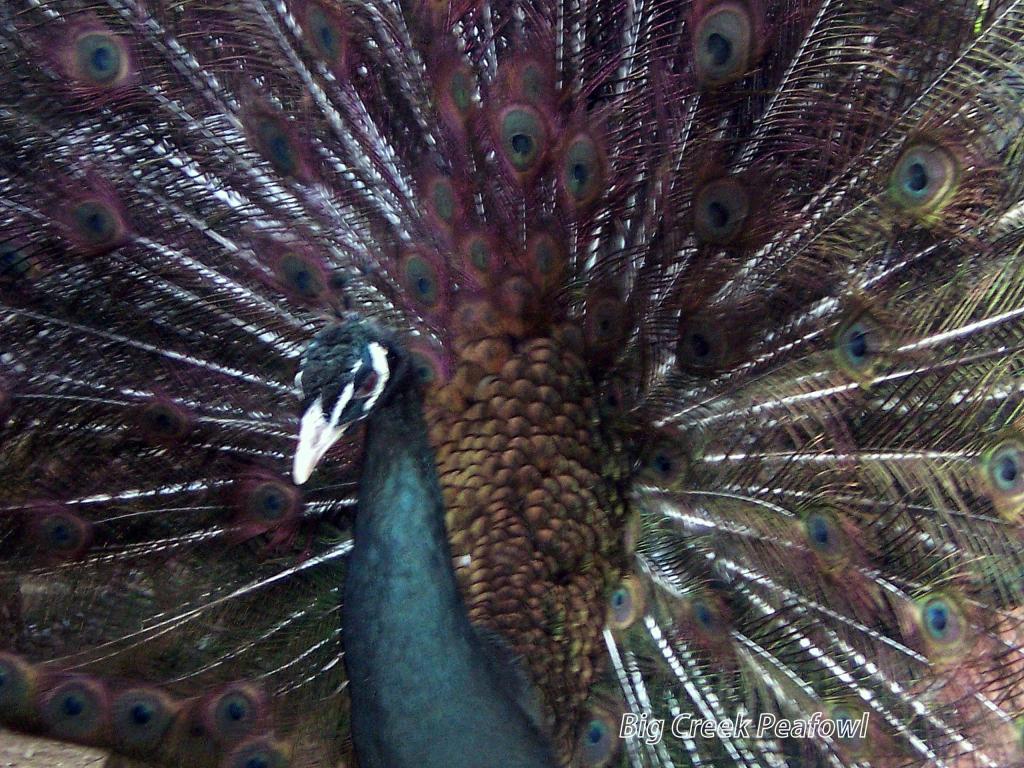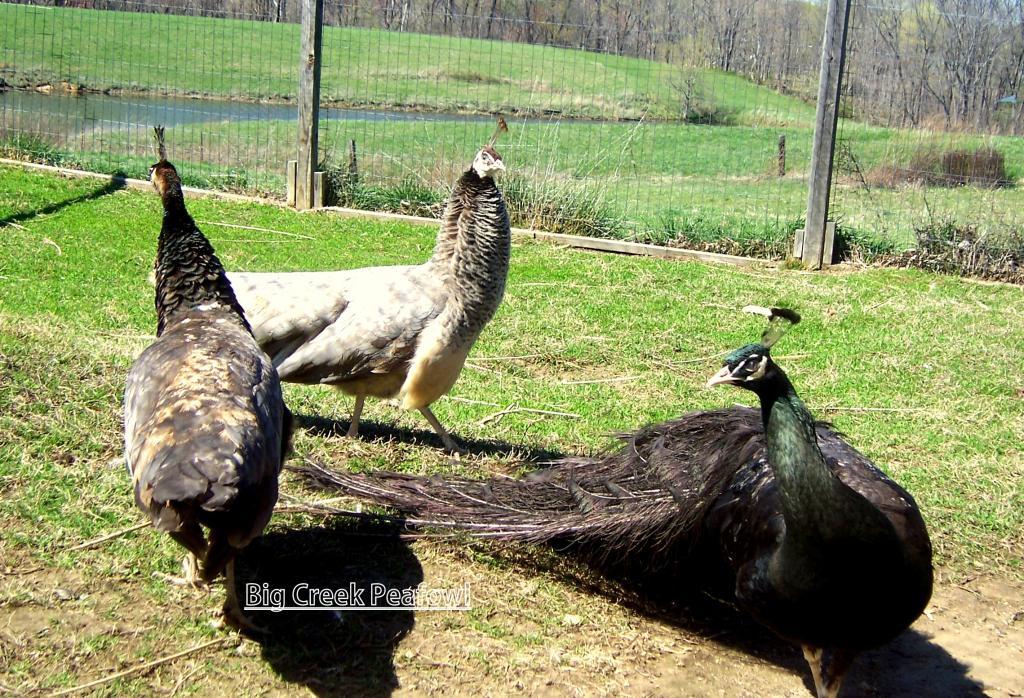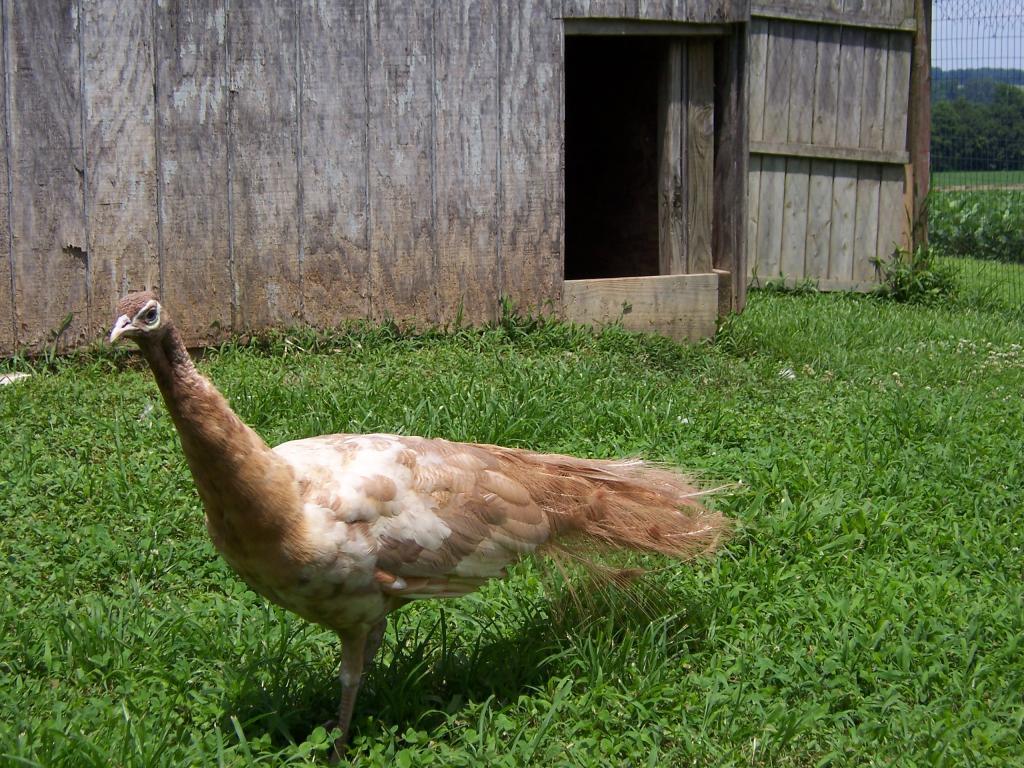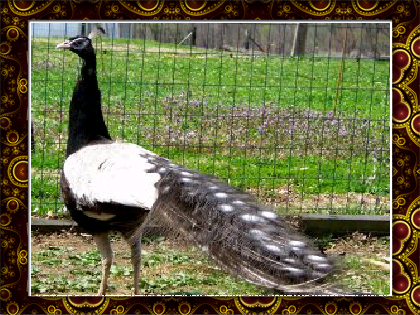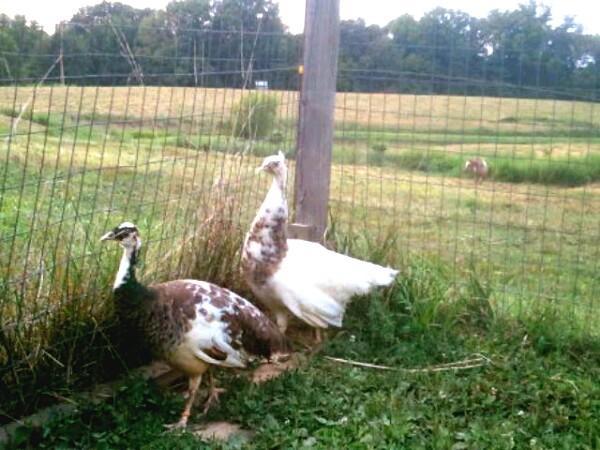Quote:
The pics of the Bronze Black Shoulder Spalding peacock at Texas Peafowl look really dark. Keep in mind the Bronze BS Spaldings were photographed with the sun shining on them, and the non-Spalding Bronze were photographed with the sun being a little more overcast. From other pics of Bronze Spaldings, it seems that the darker color of the Spalding's base color as compared to the IB's base color really enhances the darkness of the Bronze mutation.
Unless otherwise stated, the pics below are from Texas Peafowl. A couple are from Medicine Tree Farm, and are so noted.
Bronze peacock (looks to be split to BS)

Bronze peahen

Bronze Blackshoulder peacock and peahen

This Bronze White-Eye peacock was photographed with a bit more light shining on it. You can see how the Bronze gene modifies a bluer base, compared to how it modifies a greener base in the Bronze Spalding pics that follow.

This is a Bronze Spalding peacock, in similar lighting conditions to the regular Bronze and regular Bronze BS pictured above. For some reason, I was unable to upload this pic, so I provided a link to the pic on Texas Peafowl's website.
Bronze Spalding hens. Compare to the non-Spalding Bronze peahen a few pics back.


And here are the Bronze BS Spalding peacocks, with the sun shining on them.


Bronze BS Spalding Hen

This is a Bronze Spalding from Medicine Tree Farm, and it's NOT BS. This breeder is selecting for dark coloration in his Spaldings. Again, note how much darker Bronze appears on the greener base, due to high-Green-content Spalding heritage.

The point of this picture comparison is to pose a question -- if the Bronze mutation produces a darker bird with Green blood than on a pure IB bird, what about if Bronze worked together with another color mutation which darkened the color in another way? Perhaps you can have a bird as dark as a Bronze Spalding but without Green blood if you utilized Midnight.
Midnight BS

Great pic from Medicine Tree Farm, showing three males -- on left is Midnight BS, center is IB (split to either white or pied), and on right is Midnight BS Spalding. You can see how the Midnight mutation modifies the base color present, either Indian-Blue or Spalding-Greenish.

It'd be interesting to see how Bronze modifies a base already modified by Midnight (or, vice versa -- how Midnight modifies a base already modified by Bronze, or perhaps better said "how Midnight and Bronze together modify a Blue base"). A few people have PM'ed me with projects in the works, so I guess we'll find out in a couple years.
"If you always do what's always been done, you'll always get what's always been gotten."

The pics of the Bronze Black Shoulder Spalding peacock at Texas Peafowl look really dark. Keep in mind the Bronze BS Spaldings were photographed with the sun shining on them, and the non-Spalding Bronze were photographed with the sun being a little more overcast. From other pics of Bronze Spaldings, it seems that the darker color of the Spalding's base color as compared to the IB's base color really enhances the darkness of the Bronze mutation.
Unless otherwise stated, the pics below are from Texas Peafowl. A couple are from Medicine Tree Farm, and are so noted.
Bronze peacock (looks to be split to BS)
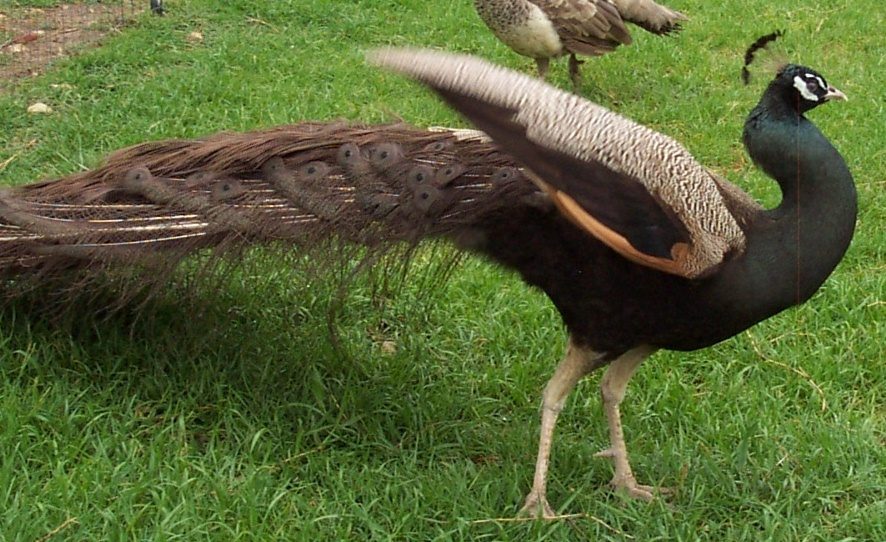
Bronze peahen
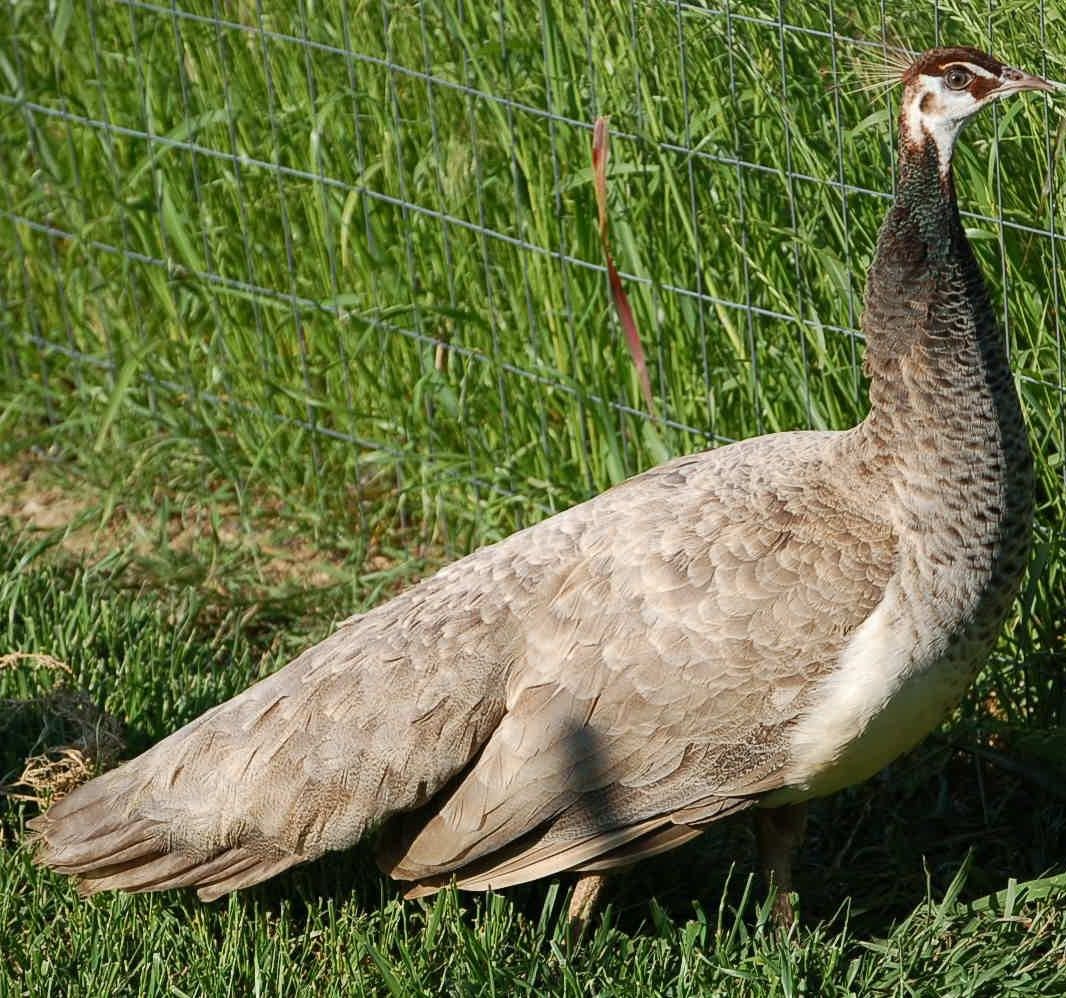
Bronze Blackshoulder peacock and peahen
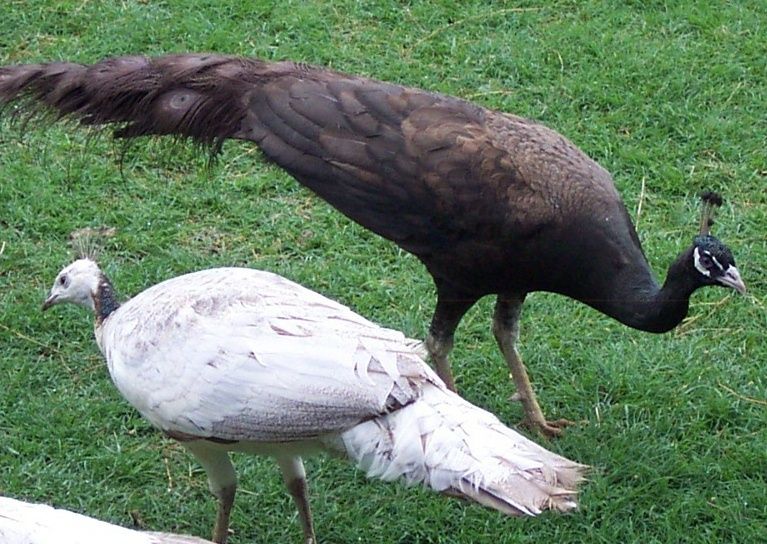
This Bronze White-Eye peacock was photographed with a bit more light shining on it. You can see how the Bronze gene modifies a bluer base, compared to how it modifies a greener base in the Bronze Spalding pics that follow.
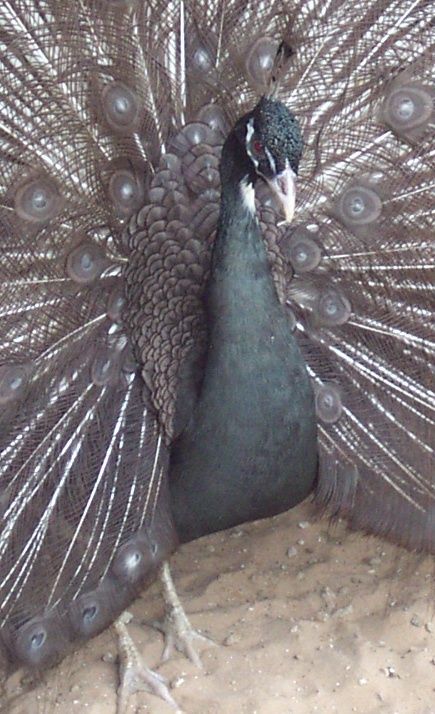
This is a Bronze Spalding peacock, in similar lighting conditions to the regular Bronze and regular Bronze BS pictured above. For some reason, I was unable to upload this pic, so I provided a link to the pic on Texas Peafowl's website.
Bronze Spalding hens. Compare to the non-Spalding Bronze peahen a few pics back.
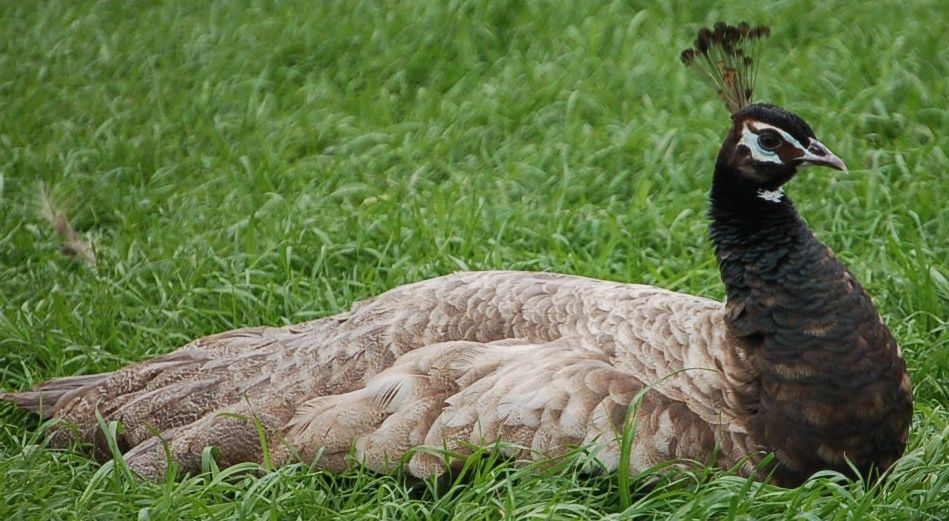
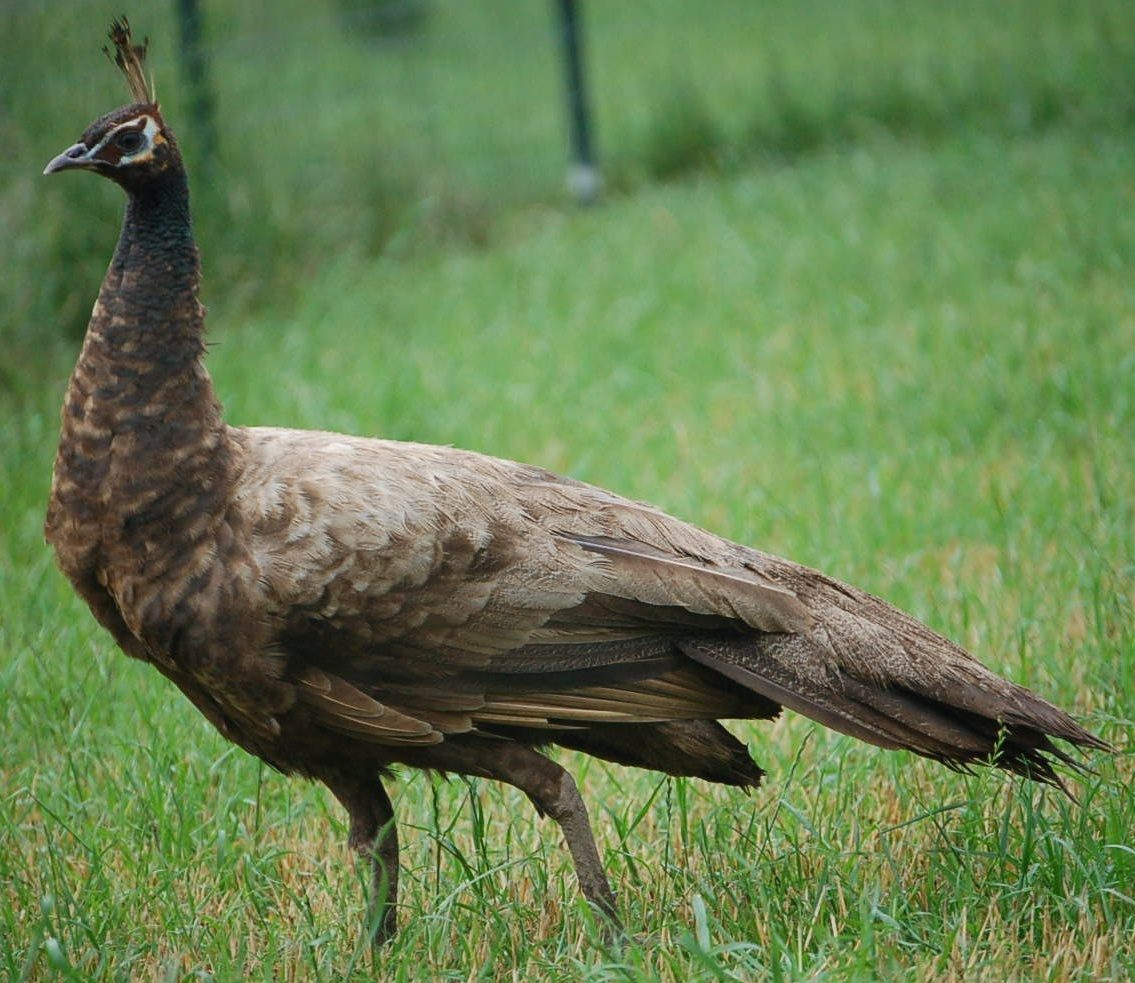
And here are the Bronze BS Spalding peacocks, with the sun shining on them.
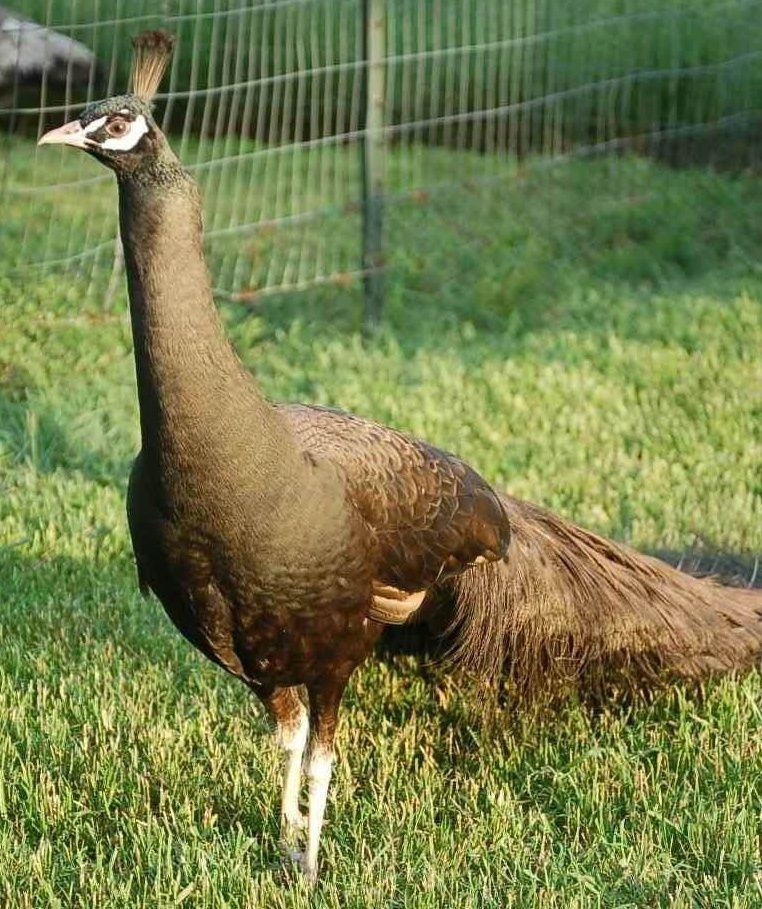
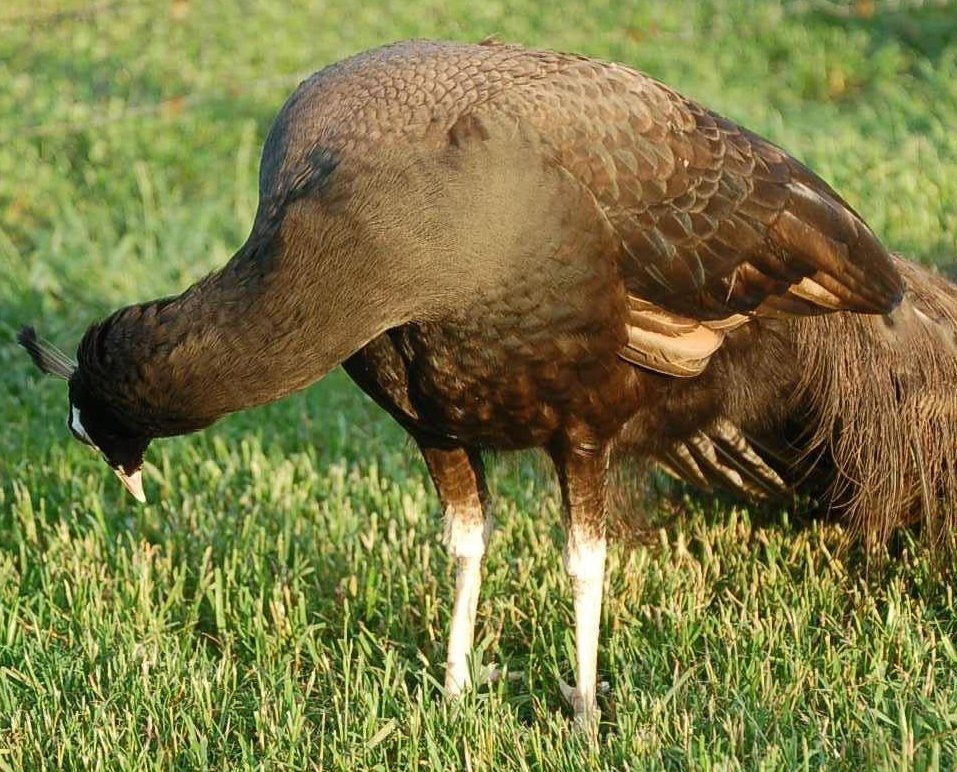
Bronze BS Spalding Hen
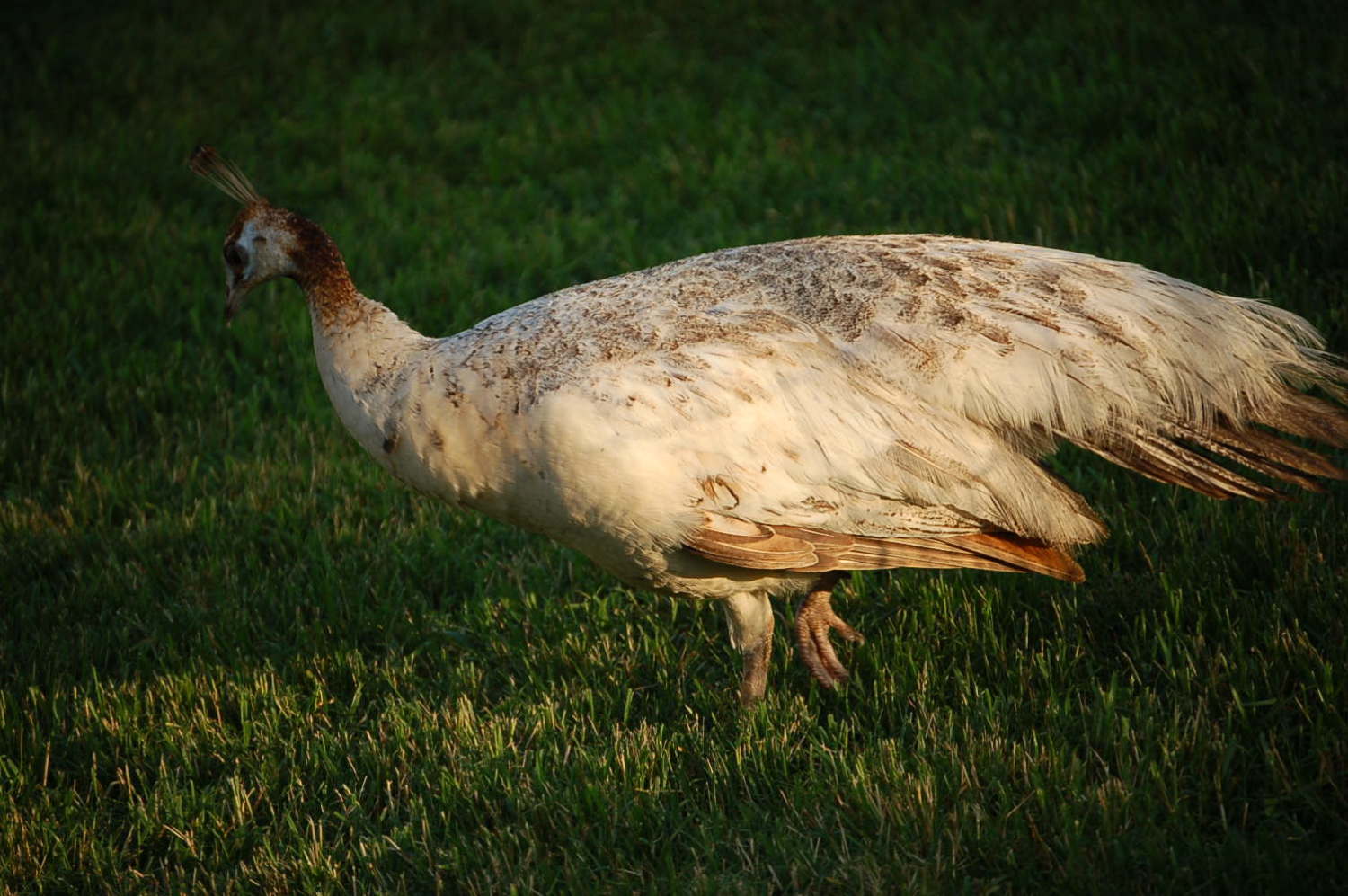
This is a Bronze Spalding from Medicine Tree Farm, and it's NOT BS. This breeder is selecting for dark coloration in his Spaldings. Again, note how much darker Bronze appears on the greener base, due to high-Green-content Spalding heritage.
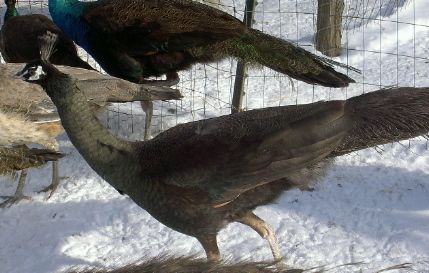
The point of this picture comparison is to pose a question -- if the Bronze mutation produces a darker bird with Green blood than on a pure IB bird, what about if Bronze worked together with another color mutation which darkened the color in another way? Perhaps you can have a bird as dark as a Bronze Spalding but without Green blood if you utilized Midnight.
Midnight BS
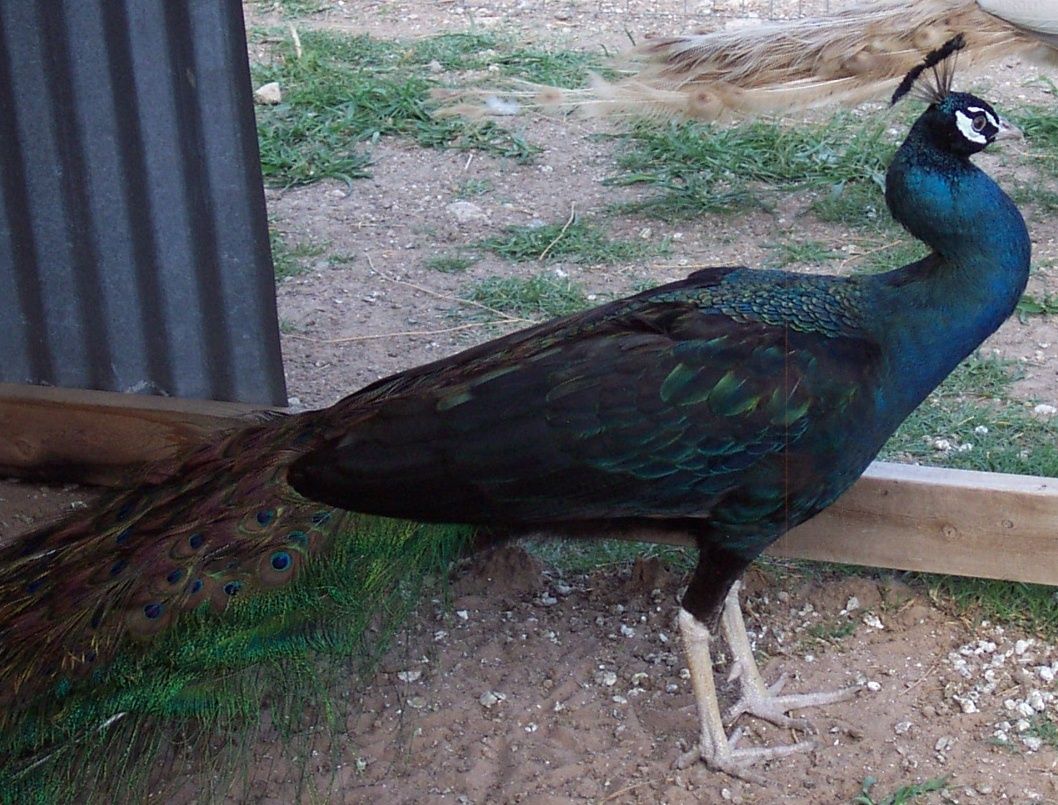
Great pic from Medicine Tree Farm, showing three males -- on left is Midnight BS, center is IB (split to either white or pied), and on right is Midnight BS Spalding. You can see how the Midnight mutation modifies the base color present, either Indian-Blue or Spalding-Greenish.
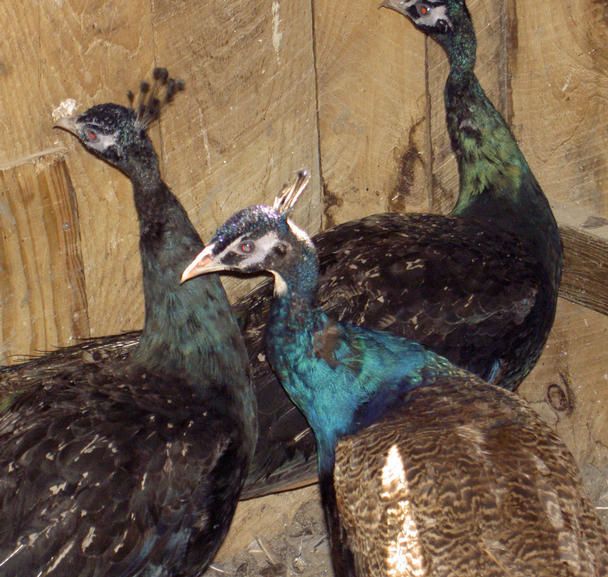
It'd be interesting to see how Bronze modifies a base already modified by Midnight (or, vice versa -- how Midnight modifies a base already modified by Bronze, or perhaps better said "how Midnight and Bronze together modify a Blue base"). A few people have PM'ed me with projects in the works, so I guess we'll find out in a couple years.
"If you always do what's always been done, you'll always get what's always been gotten."

Last edited:


